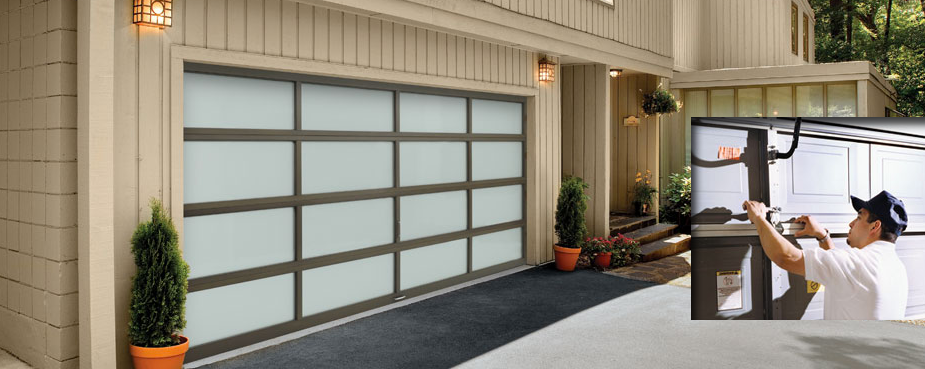Garage Door Installation: A Comprehensive Guide for Homeowners
페이지 정보

본문
Garage Door Installation: A Comprehensive Guide for Homeowners
The garage door. More than just a portal for your vehicles, it’s a significant element of your home's curb appeal, security, and overall functionality. Whether you're building a new home, replacing an outdated door, or simply upgrading for enhanced convenience, understanding the intricacies of garage door installation is crucial. This comprehensive guide will walk you through everything you need to know, from choosing the right door to the final installation steps, empowering you to make informed decisions and ensure a smooth, successful project.
Choosing the Right Garage Door: Materials, Styles, and Features

The first step in any garage door installation is selecting the perfect door for your needs and preferences. The market offers a vast array of options, each with its own advantages and disadvantages. Here’s a breakdown of the key considerations:
Materials:
Steel: Steel doors are the most popular choice, offering a balance of affordability, durability, and low maintenance. Here's more on garage door opener installation cost toronto look into our internet site. They are resistant to dents and weather, and can be insulated for improved energy efficiency. Steel doors come in various gauges, with thicker gauges providing greater strength.
Wood: Wood doors provide a classic, aesthetically pleasing look. They offer excellent insulation and can be customized with various stains and finishes. However, wood doors require more maintenance, including regular painting or staining to protect them from the elements. They are also more susceptible to warping and rot.
Aluminum: Aluminum doors are lightweight, rust-resistant, and relatively low-maintenance. They are a good option for contemporary styles and can be customized with various panel designs and finishes. However, aluminum doors are more prone to dents than steel doors.
Composite: Composite doors are made from a combination of materials, often including recycled wood fibers and resins. They offer the look of wood with the durability and low maintenance of composite materials. They are resistant to warping, rot, and insect damage.
Fiberglass: Fiberglass doors are lightweight, durable, and resistant to dents and corrosion. They are available in a variety of styles and can mimic the look of wood. However, they can be prone to cracking in extreme temperatures.
Styles:
Sectional: Sectional doors are the most common type, consisting of horizontal panels that move along tracks. They are available in a wide range of styles, materials, and insulation options.
Tilt-Up (or Swing-Up): Tilt-up doors are a single panel that swings up and out. They are typically less expensive than sectional doors but require more headroom and can be less secure.
Roll-Up: Roll-up doors consist of individual slats that roll up into a drum above the door opening. They are often used in commercial applications but are also available for residential use.
Carriage House: Carriage house doors mimic the look of traditional carriage house doors, often featuring decorative hardware and a swing-out appearance. They are available in both sectional and swing-up styles.
Features:
Insulation: Insulated doors are essential for energy efficiency, especially in climates with extreme temperatures. Insulation helps to regulate the temperature inside your garage, reducing your heating and cooling costs.
Windows: Windows can add natural light to your garage and enhance its curb appeal. They are available in various styles and sizes, and can be insulated for improved energy efficiency.
Hardware: High-quality hardware, including tracks, springs, rollers, and hinges, is essential for the smooth and reliable operation of your garage door.
Automatic Openers: Automatic garage door openers provide convenience and security. They are available with various features, such as remote control, smartphone integration, and battery backup.
Safety Features: Look for garage doors and openers with safety features such as photo-eye sensors and automatic reverse mechanisms, which prevent the door from closing on objects or people.
Preparing for Installation: Measuring, Planning, and Safety
Before you begin the installation process, it's crucial to prepare your garage and gather the necessary tools and materials.
Measurements: Accurately measure the width and height of your garage door opening. Also, measure the headroom (the space between the top of the opening and the ceiling) and the backroom (the space from the opening to the back wall). These measurements are essential for selecting the correct door size and type.
Tools and Materials: You'll need a variety of tools, including a level, tape measure, drill, screwdriver, hammer, safety glasses, work gloves, and a ladder. You'll also need the new garage door, opener, hardware, and any necessary fasteners.
Safety First: Garage door installation can be dangerous. Always wear safety glasses and work gloves. Disconnect the power to the garage door opener before starting any work. Be cautious when working with springs, which are under high tension and can cause serious injury if mishandled. If you're not comfortable with the installation process, consider hiring a professional.
Local Building Codes: Check your local building codes for any requirements regarding garage door installation, such as fire resistance ratings or specific safety features.
The Installation Process: A Step-by-Step Guide
While the specific steps may vary depending on the type of garage door and opener, the general installation process typically involves the following:
- Remove the Old Door: If you're replacing an existing door, carefully remove it, including the panels, tracks, springs, and opener. Disconnect the power to the opener and ensure the door is properly supported before removing any components.
- Install the Tracks: Assemble the tracks according to the manufacturer's instructions and attach them to the door frame. Ensure the tracks are plumb and level.
- Assemble the Door Panels: Assemble the door panels, following the manufacturer's instructions.
- Attach the Panels to the Tracks: Carefully lift the assembled door panels and attach them to the tracks using the appropriate hardware.
- Install the Springs: Springs are under high tension and are best left to professionals. However, if you choose to install them yourself, follow the manufacturer's instructions precisely. Use the correct winding bars and exercise extreme caution.
- Install the Opener: Mount the garage door opener motor to the ceiling and connect it to the door. Install the safety sensors and test their functionality.
- Connect the Opener to the Door: Attach the opener arm to the door and adjust the travel limits and force settings.
- Test and Adjust: Test the door's operation, including the up and down travel, safety features, and remote control. Make any necessary adjustments to ensure smooth and safe operation.
- Final Touches: Install any decorative hardware, such as handles and hinges. Clean up the work area and dispose of any debris.
Deciding whether to install your garage door yourself or hire a professional is a critical decision.
DIY Installation: DIY installation can save you money on labor costs. However, it requires a certain level of skill, experience, and access to the necessary tools. It also carries the risk of injury if not done correctly.
Professional Installation: Hiring a professional ensures that the installation is done correctly and safely. Professionals have the expertise, tools, and experience to handle all aspects of the installation process. They also typically offer warranties on their work.
Maintenance and Troubleshooting
Once your garage door is installed, regular maintenance is essential to keep it operating smoothly and safely.
Lubricate: Lubricate the tracks, rollers, hinges, and springs regularly with a garage door lubricant.
Inspect: Inspect the door and opener regularly for any signs of wear and tear, such as frayed cables, loose hardware, or damaged panels.
Test Safety Features: Test the safety features, such as the photo-eye sensors and automatic reverse mechanism, regularly.
- Professional Service: Consider having your garage door professionally serviced annually to ensure its proper operation and address any potential issues.
Garage door installation is a significant undertaking, but with careful planning, research, and attention to detail, you can achieve a successful outcome. By understanding the different types of doors, preparing your garage properly, following the installation steps, and performing regular maintenance, you can enhance your home's curb appeal, security, and functionality for years to come. Whether you choose to DIY or hire a professional, remember that safety is paramount.
- 이전글Home Remodeling: A Comprehensive Guide 25.07.15
- 다음글Effortless Style Secrets for Chic Looks 25.07.15
댓글목록
등록된 댓글이 없습니다.








